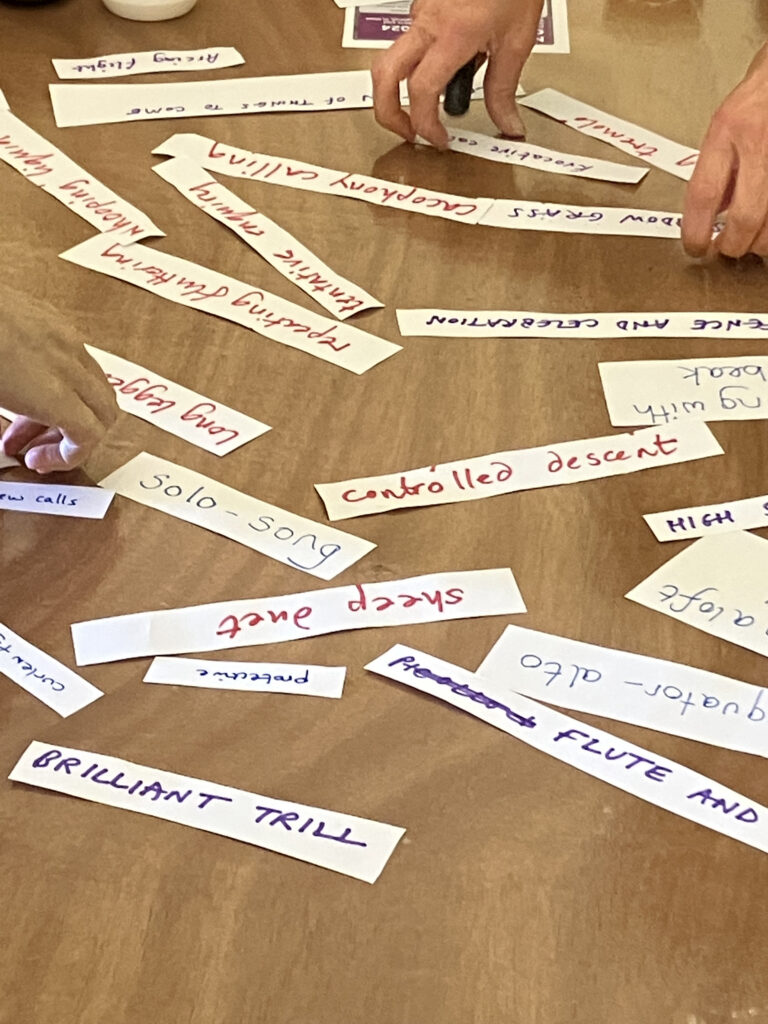Inspired by the chorus of the curlew we ran a series of singing and song writing workshops. Arts events provide an excellent opportunity to talk about conservation issues with the general public.
At the start of the sessions, participants are not always confident in their ability create a finished work of art in a single day. But the workshop leaders suggest exercises which take the pressure off, and we all get something down on paper, early on.
Artists are good at exploiting accidents to ensure they steer clear of convention. Nature writer and workshop leader, Karen Lloyd uses David Bowie’s ‘cut-up’ method to help pick out the best lines from the morning’s free-wheeling writing exercise. These lines are then stitched together and put to music, with the help of composer, Mary Keith.

One participant says, “I’m no good at writing… but I could make you a felted curlew”. The line “I could make you a felted curlew” goes on to become the first line in a song laced with references to sewing and textiles.
It is a pleasure to respond to curlew in this way. Playing with loosely connected images, we find meaning and poetry emerging, joined by rhythm and sounds. It’s exciting to be part of a creative process; to manifest form from chaos.
By the end of the three workshops, we have three original songs. “The Gather” recalls the “bill like a sail-maker’s needle” and “herringbone feathers that tickle the sky”. Our second song, “Querulous Calling” imagines the surprise of hearing a curlew for the first time. The third, “Rise up” is the closest thing we have to a love song.
But what is music without a choir to sing it? At the end of August, we wait nervously for the participants from three workshops to attend a joint rehearsal. Will anybody turn up? In the end they do, in good numbers – and that evening we have the first performance of the “Pennine Hills Curlew Choir.”
These projects have been funded by the Yorkshire Dales Millennium Trust and the Farming in Protected Landscapes Programme.


